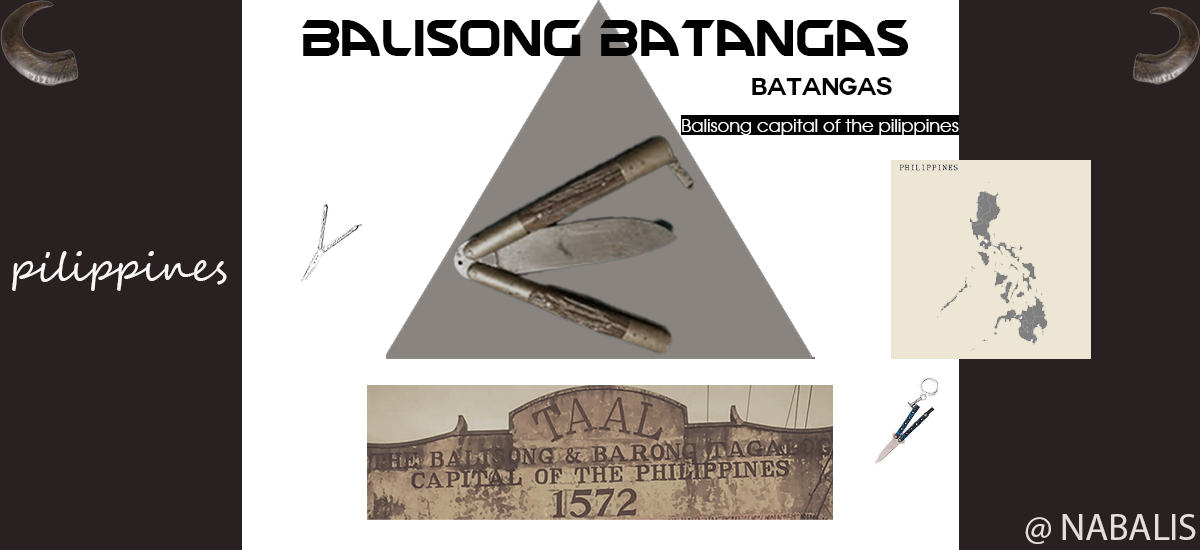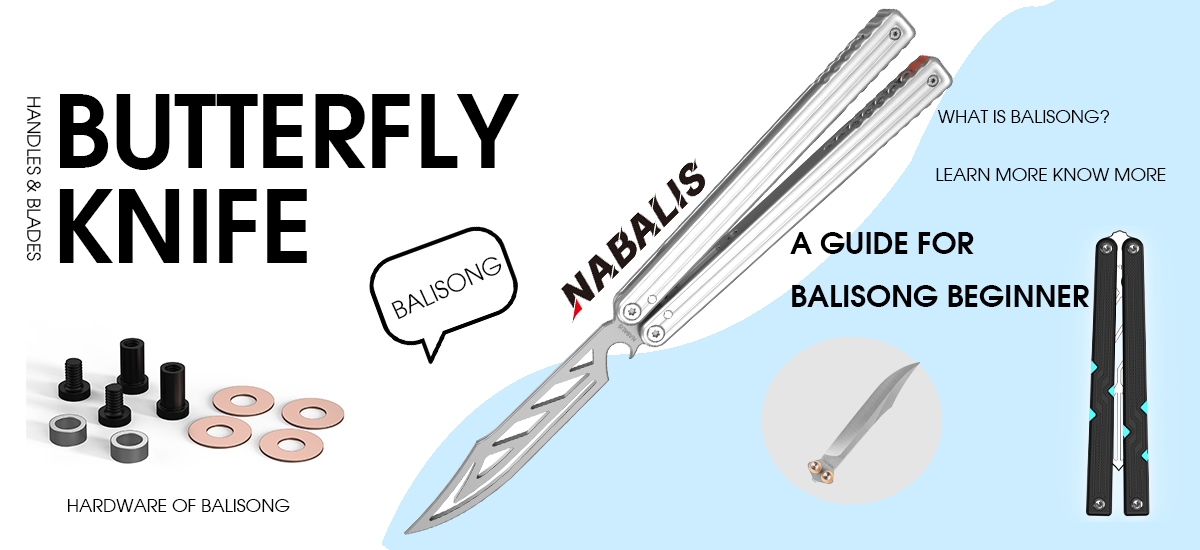What is balisong batangas
The balisong, also recognized as the Batangas knife, butterfly knife, click-click knife, and more, boasts distinctive designs in Taal. Batangas, renowned as the balisong capital of the Philippines, has witnessed a flourishing industry due to the active involvement of its residents in crafting and selling these knives.
Visitors can explore the town's unique charm and purchase export-grade butterfly knives or collector's balisongs as memorable souvenirs.
Taal, home to a village named Balisong, offers an immersive experience of witnessing the entire process of balisong manufacturing. Taaleños engage in the complete production, starting from molding metal sheets to blade sharpening and handle craftsmanship.
The term "balisong" originates from two words: "bali," meaning to bend or break in Filipino, and "song," derived from "sungay," the horn of the water buffalo.
Initially crafted entirely from buffalo horn, which possesses a plastic-like quality, the balisong's name reflects its folding or bending nature and its historical connection to buffalo horn material.
History of balisong batangas (when and who)
The butterfly knife carries with it a myth and legend that suggests it as an ancient Filipino invention dating back to 800 AD. This assertion, claiming it as the oldest weapon in the Filipino fighting system of Eskrima, is widely dismissed by academics and historians as mere speculation or an urban legend.
Another captivating tale surrounding the balisong involves a Filipino warrior who purportedly vanquished twenty-nine adversaries with this knife, leading to its alternative name – Veintinueve, twenty-nine.
On the other hand, it is asserted that “Perfecto de Leon” is the father of Balisong in the Philippines, and historical records indicate that the first batangas balisong was crafted in 1905.
As the demand for the traditional "Itak" or bolo dwindled with the onset of the Industrial Revolution, Perfecto de Leon transitioned to knife manufacturing, eventually focusing on the development and promotion of the balisong as a distinctly Filipino weapon. Barrio Balisong, in conjunction with neighboring barrios such as Pook, Buli, and Tolo, played a vital role in this industry.
Additionally, a significant majority of butterfly knives originated from Barrio Balisong in Taal, Batangas. Moreover, Perfecto de Leon's engagement with the Muslim knife known as the kris inspired him to create the first knife with twisted rims.
Development of batangas baliosng knife
The evolution of materials used in crafting Batangas knives is notable. Initially, the handle of the earliest Batangas knives was meticulously fashioned from either a horse's bone or water buffalo's horn, while the blade was ingeniously created from recycled automotive bearing steels.
This choice, although prone to rust and more economical than its stainless steel counterpart, showcased the resourcefulness of the craftsmen. The latch of the knife was typically composed of brass.
Nowadays, the blades of modern balisong knives predominantly utilize stainless steel, a significant departure from the recycled materials of the past. Meanwhile, the handles exhibit a diverse array of materials, including those carved from a stag's horn, crafted from fiberglass, wood, or entirely composed of brass, aluminum, and titanium.
The proliferation of balisong knives extended beyond Filipino shores following World War II, specifically during the liberation period. These batangas baliosng knives gained popularity among American soldiers, who brought them back to the Western World.
In the present day, the balisong experiences a resurgence in popularity, propelled by the revival of martial arts and the influence of modern communication media such as print publications and films. Interestingly, the balisong is occasionally dubbed the “Ninja Knife,” a design perhaps stemming from Western creative imagination, acknowledging its rightful application but misattributing its country of origin.
Status quo of balisong batangas
However, the balisong batangas industry is facing a gradual decline as the skilled craftsmen age, and their successors, notably their children, lack the inclination to carry forward this time-honored craft.
A potential avenue for the perpetuation of this industry lies in the enhancement of the balisong's quality, a commitment upheld by both designers and batangas balisong makers to this day.
Nevertheless, in Taal, there remain steadfast craftsmen who tenaciously adhere to the creation of authentic, traditional Filipino handmade balisong or butterfly knives.
Their unwavering commitment to preserving the cultural heritage of Batangas balisong reflects a profound passion and dedication, an endeavor truly deserving of admiration.
Some balisong batangas, you need to know
Veintinueve et al.

The traditional and still the popular type of batangas balisong is called veintinueve, the Spanish term for twenty-nine. According to legend, this name stems from the tale of a Batangueno who single-handedly defeated 29 adversaries using the balisong as his weapon.
Alternatively, some assert that it signifies the dagger's total length of 29 centimeters when fully opened. Despite the uncertain origins of its design, the balisong achieved prominence in the Philippines. The Balisong also offers convenient alternatives such as veinticuatro (24 cm) and de diez (10 cm).
Pandayan B001636

Pandayan B001636 balisong, a harmonious fusion of tradition and innovation. Crafted with a high carbon steel blade, this 24cm masterpiece embodies durability and sharp precision. The 12cm blade strikes a perfect balance between compact design and versatile functionality.
This batangas balisong's handle, a blend of brass and bone inserts, not only enhances aesthetic charm but also offers a comfortable and reliable grip. Weighing a mere 180g, the Pandayan B001636 is a lightweight companion suitable for outdoor adventures and daily tasks alike.
What sets this blade apart is its integration of modern technology—a Blockchain Digital Passport accompanies each piece, guaranteeing authenticity and providing a secure digital record for a unique ownership experience.
Elevate your journey with the Pandayan B001636, where traditional craftsmanship meets cutting-edge technology. Each detail of this exceptional blade speaks to the artistry and precision that defines its unparalleled quality.
Pandayan B001620

The batangas balisong, distinguished addition to balisong.com's Traditional Balisong Collection. This finely crafted balisong knife exemplifies a perfect blend of heritage and modernity.
The 12cm high carbon steel blade ensures exceptional sharpness and durability, making it an ideal tool for both enthusiasts and collectors.
The handle, meticulously designed with stainless steel and adorned with bone inserts, not only adds to its visual allure but also provides a solid and comfortable grip. With an overall length of 24cm and a weight of 190g, the B001620 strikes a balance between functionality and portability.
Unlike its counterparts, this balisong stands out with its unique aesthetic and traditional charm. Whether you are a seasoned collector or a knife enthusiast, the B001620 promises a distinctive and refined addition to your collection.
Experience the legacy of the B001620, where craftsmanship meets contemporary design, offering a timeless and captivating piece for those who appreciate the artistry of traditional balisongs.
Other important you need to know about balisong batangas
Price
Balisong prices span from PHP 200 to 1,300. The classic veintinueve typically falls within the range of PHP 600 to 800, while dagger pens are priced at around PHP 70 each.
Length
It is said that the longest balisong available for retail in Taal, Batangas, measures 72 inches, while the smallest one is a mere 1.5 inches. Nevertheless, during a festival in the town of Taal, an extraordinary size of 6 meters was noted. It is important to note that the officially recognized and legitimate size for a balisong is 29 cm in overall length.
Legality
In the Philippines, the sale of a 39-inch balisong is deemed illegal. Moreover, carrying one without proper identification or a valid permit in the streets of the capital is generally prohibited due to their widespread involvement in criminal activities and altercations.
Present regulations mandate individuals to establish a legitimate need related to livelihood or utilitarian purposes, such as grass cutting, fruit and meat preparation, knife vending, martial arts instruction, etc., to carry bladed implements in urban areas. This stands in contrast to the legal status of Swiss army knives.
The country follows a "rule of thumb" where a pocket knife with a blade not exceeding one's palm and that cannot be opened with one hand alone is considered a utility rather than a weapon, making it potentially permissible.
You could read this post to know more information about the legality of balisong (US)
Balisong batangas,the symbol of Taal in Pilippines
Balisong Batangas, emblematic of Taal in the Philippines, serves as a cultural symbol deeply rooted in the town's heritage.
Taal is renowned as the balisong capital, Taal's craftsmen handcraft these unique butterfly knives, blending tradition and innovation.
With historical significance and intricate designs, Balisong batangas reflects the town's rich cultural identity and craftsmanship, making it a cherished symbol of Taal.
Know more our store





Leave a comment
This site is protected by hCaptcha and the hCaptcha Privacy Policy and Terms of Service apply.